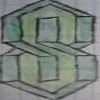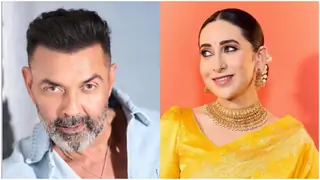- Raag or Raga or Raaga: The melody with an overall mood or environs producing a lasting impression while entertaining or recreating the audience. A combination of different musical notes or Swaras in a particular sequence of ascending and descending makes a Raag.
- Swara(s) or Note(s) : Swara means a musical note including the Drone (Swarit) or Shadaj or Sa. An Octave has basic 7 notes which are universally known as
which may be represented equivalently in Indian Classical Music as
Sa Re Ga Ma Pa Dha Ni
- Jati : It is the classification of a Raag based on the number of notes employed in its Aaroh and Avroh Jati is described in a pair of notes in Aaroh & Avroh of a Raag. Sampurna is all 7 notes, Shadhav is 6 notes, Audhav is 5 notes and Surtar is 4 notes. The different Jati combinations are given below in a table.
| | | | | |
| | | | Sampurna-Sampurna | Yaman, Aheer-Bhairav |
| | | | Sampurna-Sampurna Vakra | Puria-Dhanashri, Dev-Gandhar |
| | | | Shadhav-Sampurna (Vakra) | Kausi-Kanada, Adana |
| | | | Shadhav-Shadhav (Vakra) | Nayaki-Kanada, Gurjari-Todi |
| | | | Audhav-Sampurna | Sindhura |
| | | | Audhav-Shadhav (Vakra) | Shuddha-Sarang, Desi |
| | | | Audhav-Audhav (Vakra) | Gunkali, Deshkar, Megh-Malhar |
| | | | Surtar-Audhav Vakra | Gorakh-Kalyan |
| | | | Audhav-Sampurna Vakra | Kamod, Basant, Khambavati |
Obviously there are notes in cases from sr.nos. 3 onwards in Aaroh or Avroh that are not employed in whole Raag. It is possible that a note not emplyed in Aaroh may be used in Avroh and vice-versa. In some cases the rendering becomes Vakra (with a turn around that note). This is indicated in Jati. e.g. Audhav-Sampurna Vakra and so on.
- Varjya-Swaras or Forbidden Notes : Notes not employed in a Raag are called Varjya Swaras or Forbidden notes. e.g. Raag Hans-Dhwani has Madhyam & Dhaivat Varjya and its Jati is Audhav-Audhav.
- Time of Raag : There is a specific time period for a Raag during which it should be rendered. The Time Cycle employed in Raagas rendering begins at 6 AM and ends at 6 PM for the day (12 hours) and for the night begining 6 PM and ends at 6 AM next day (12 Hours). Each cycle (day & night) are devided into time periods of 3 hours each called Prahar. So there are 4 Prahars in the Day Time Cycle and 4 Prahars in the Night Time Cycle.Apart from this there are many Raagas which are rendered in specific seasons viz; Basant, Bahar etc are the Raagas rendered in the Spring Season while Malhar, Megh, Surdasi-Malhar, Gaud-Malhar etc are the Raagas rendered during Rainy Season. There are some Raagas which can be rendered at any time also called Sarv-Kalik Raagas or All-Time Raagas viz; Raag Bhairavi, Pahadi etc.
- Aaroh-Avroh : Aaroh of a Raag is the sequence of notes in ascending order between Madhya Shadja (S) and Tar Shadja (S') where as Avroh of a Raag is the sequence of notes in descending order between Tar Shadja (S') and Madhya Shadja (S).
- Mukhya-Ang or Main Feature or Pakad of a Raag : This includes very essential notations without which the Raag can not menifest as such.
- Vishranti Sthan or Stoppable Notes : These are the notes for ending Aalaps and Taans while rendering a Raag. Shadaj or Shadja or S is obviously a note as Vishranti Sthan. There could be other notes too as Vishranti Sthans in a Raag.
- Vishesh : It includes the notations to bring out the melodic form as well as the current form information about a Raag. The other names of Raag if any, and the need to acquire expertise from Guru and the importance of Swara, Laya etc in the artistics rendering.
- Taan : Taan is the combination of notes rendered in a faster speed (More than 2 swaras in a beat or Matra) in ascending or descending order. The Taan pattern should be made beautifully effective through Sapat Taans, Alankars, Gamak etc. Alankars follow a particularly pattern of combination of notes like an ornament and are very efective while rendering Taans.
- Khatka : If several notes are rendered in on stroke it's called a Khatka
- Murkiyan : In rendering a note if we simultaneously derive it from bothe upper and lower note as in e.g. ,NSRS or RS,NS or DPGP giving a rounded note. It is called a Murki. It's a kind of tonal embellishment. It is natural to many voice types and adds beauty to renderings. Murki is used while singing.
- Meend : It's a smooth flowing passage from one note to other in ascending or descending order. e.g.
- Gamak : Taan Renendering with Meend for Vakra Swaras. It can be heavy or light. e.g mgmRS in Raag Darbari Kanada.
- Poorvang-Uttarang
- Rasas : There are 9 Rasas or Bhavas are described in the Indian Classical Dance forms viz Bhakti (Devotional), Karuna, Veer, Veebhatsa, Vichitra, Hasya (Humour), Virah, Vairagya & Krodh (Anger).



























